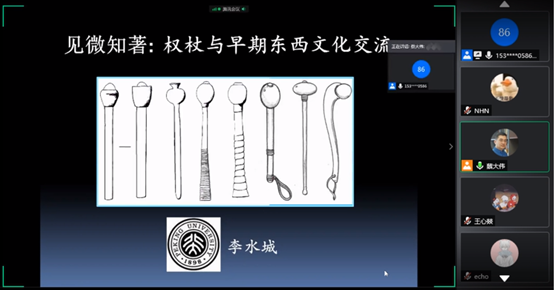Li Shuicheng, a professor from Peking University, delivered the second academic report titledMuch in Little: The Scepter and Early Eastern and Western Cultural Exchanges, one of a series web-based lectures on theEarly Eastern and Western Cultural Exchanges from a Multidimensional Perspectiveat Tencent Meeting (ID 276 903 617) at 10:00-11:30 on the morning of June 21. This lecture is the 82nd in a series of lectures on the brand forumFrontier Archaeology and Chinese Forum of Cultural Identityof the Research Center for Chinese Frontier Archaeology (RCCFA), Jilin University. The scepter, as a cultural trait, originated in the Near East and gradually spread to Europe, North Africa, and Central Asia. About 4,000 years ago, the scepter spread east to northwestern China, and later a small portion of scepters entered into the Central Plains. They were accepted by some high-level social leaders in the Xia, Shang and Zhou dynasties and placed side by side with traditional Chinese ritual instruments like tomahawk and bronze ritual vessels as a symbol of kingship and status. In the Warring States Period, the scepter’s function as a symbol of authority was gradually weakening, showing that the Chinese civilization was beginning to take a calculated attitude towards foreign cultures. The development and spread of the scepter provided a profound insight into the history of ethnic migration and the interactions of different cultures in Eurasia since human society entered the Neolithic Age, especially after the initial formation of the world system, and helped further promote the research in the field of early Eastern and Western cultural exchanges.

Hosted by: Prof. Cai Dawei, Deputy Director of the RCCFA.